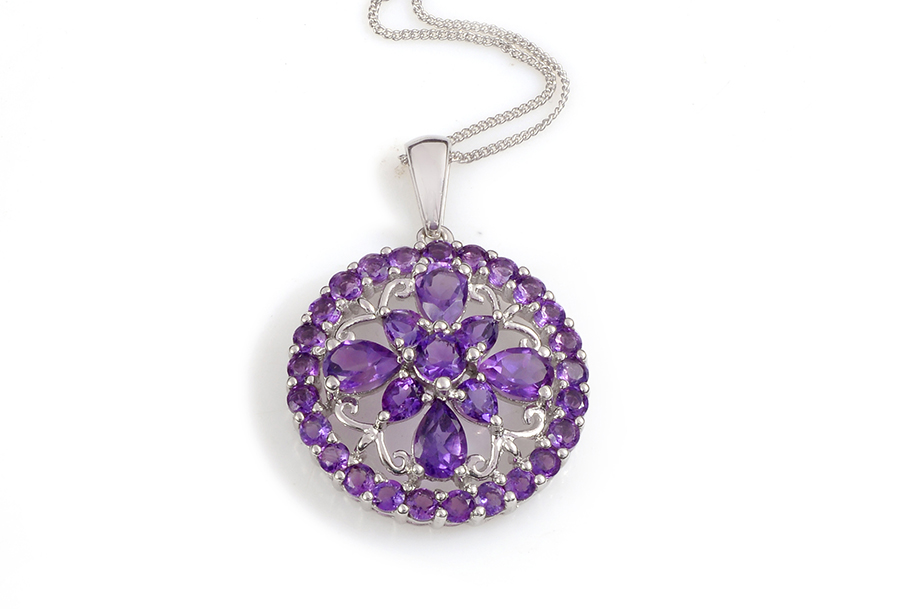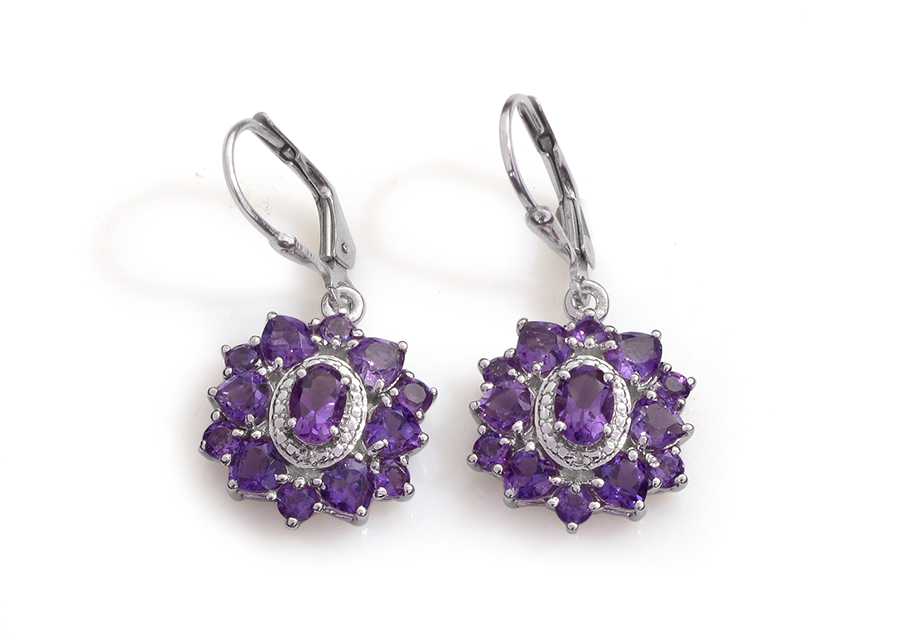Amethyst: Uraguyan
Precious amethyst is the purple member of the quartz family, forming inside volcanic rock geodes. Uruguayan amethyst is treasured for its rich purple and blue-violet hues with flickers of red and indigo.
Known for its rich color, amethyst is one of the most precious stones within the quartz family. This purple variety of quartz forms within large, crystal geodes in volcanic rocks. Found inside the hollow of agate rocks, Uruguayan Amethyst is a breathtaking natural beauty. Our Uruguayan amethyst is of some of the finest quality amethyst available. These stones were mined in the prestigious Artigas Department in Northern Uruguay, where the most desired amethysts are found today. Prized for their deep purple hues, Uruguayan amethyst stones are untreated and 100 percent natural. This gemstone's color ranges from a light lavender-pink to a deep purple. It is also displays pleochroism, meaning it appears different colors when viewed from different angles. When light hits this gem, you can see undertones of reds and blues. The world's largest amethyst geode is known as the 'Empress of Uruguay.' With tens of thousands of naturally formed, perfect deep purple amethyst crystals, this big beauty weighs 2.5 tons. While its size is impressive, it's this gem's sheer beauty that makes people's jaws drop. Displayed in the Atherton Tablelands region of Cairns, Australia, this majestic crystal is a sight to see.
- According to legend, there was a wagon traveling from South Brazil to the Uruguayan capital of Montevideo during the 18th century. The wagon broke its axel when it attempted to cross a small river. One the wagon's wheels hit a rock and cracked it in half. Inside this rock, the travelers found very deep blue-violet crystals. These were believed to be Uruguayan amethyst.
- In Greece, archeological evidence of polished amethyst set in gold rings has been found dating back to the Minoan period (around 2500 BCE).
- In Greek and Roman mythology, the god of wine and revelry, Dionysus, murdered a maiden named Amethyst while in a drunken rage with a pair of ferocious wild tigers. With her dying breath the girl prayed to Artemis, the goddess of wild beasts, who transformed her into a white quartz statue. When Dionysus realized what he had done, he wept into his wine goblet and collapsed, spilling the goblet's contents on the statue. Amethyst's crystal figure became stained with tears and wine. From this mythological tale, the gem amethyst has becomes a symbol of sobriety. Ancient wine chalices were sometimes carved from amethyst in an attempt to stop heavy drinking. Leonardo Da Vinci believed amethyst could dispel malice and hasten sound thinking. In addition, people believed it is beneficial against money and legal troubles and helps develop business acumen.
- Amethyst is a protective stone, beneficial for travelers and military families.
- It has been used by crystal healers to help with addiction, insomnia, pain relief, immune deficiencies, circulatory issues, reproductive health and general healing.
LOCATION: Uruguay
Amethyst can be found in a number of locations, including Brazil, Zambia, and South America. However, some of the finest amethysts in today's gem market are sourced from Uruguay's prestigious Artigas Department.

- Ranks 7 on the Mohs hardness scale.
- Color may appear deep purple, light lilac, lavender and mauve.
- Sourced from Uruguay.
- Member of the quartz family.
- Birthstone for February.
- Traditional gift for 6th and 33rd anniversaries.





